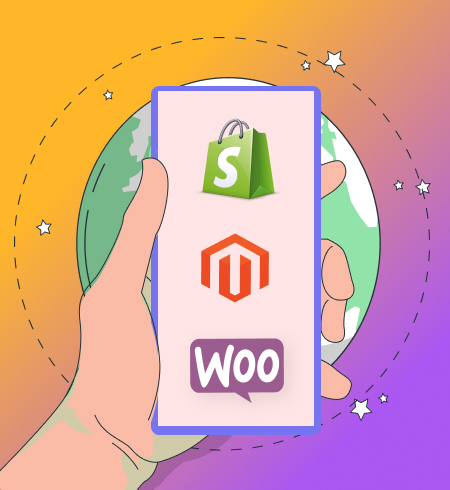Table of Contents

Introduction
Starting an online store? Your choice of platform can make running your business either a breeze or a headache. Let’s look at three popular options: Shopify, WooCommerce, and Magento. We’ll break down what makes each one different in simple terms, focusing on what matters most to store owners.
Shopify
Features | Description |
|---|---|
Ease of use | Think smartphone-simple. If you can use Facebook, you can use Shopify. Perfect for beginners who want to start selling quickly. |
Setup time | Quick start – most stores go live within a day. No technical knowledge needed. |
customization | Like decorating a pre-built house. You can change colors and layouts, but can’t knock down walls. |
cost | Starts at $29 monthly. Think Netflix subscription, but for your business. |
hosting | All-inclusive package – Shopify handles the technical stuff. |
Scalability | Good for growing businesses. Works well until you hit about $5 million in yearly sales. |
Payment options | Works with most payment methods your customers use. |
SEO | Built-in tools help Google find your store. Not fancy, but gets the job done. |
Support | 24/7 help available – real people you can call, email, or chat with. |
Add-ons | Like an app store for your shop. Fewer options than WooCommerce, but carefully selected. |
Design options | Clean, professional templates that work right away. |
Mobile shopping | Every theme works perfectly on phones and tablets. |
Community | A growing group of users sharing tips and tricks. |
WooCommerce
Features | Description |
|---|---|
Ease of use | Like using WordPress – great if you’re already familiar with it. Might take some learning if you’re new. |
Setup time | Takes a weekend to set up properly. You’ll need to handle hosting and WordPress installation first. |
Customization | Complete freedom – like having the building permits and tools to redesign your whole store. |
Cost | The platform’s free, but budget for hosting ($10-30 monthly) and any premium add-ons you need. |
Hosting | You pick your host – like choosing your own office space instead of renting a ready-made shop. |
Scalability | Grows with your business. Works for small shops to major retailers. |
Payment Options | Connects with nearly every payment service out there through plugins. |
SEO | Works great with WordPress SEO tools. Good for getting found on Google. |
Support | No direct hotline, but a huge online community ready to help. |
Add-ons | Massive plugin library – like having access to every tool imaginable. |
Design options | Thousands of themes are available – from free basics to premium designs. |
Mobile shopping | Most modern themes work well on phones, but double-check before buying. |
Magento
Feature | Description |
|---|---|
Ease of use | Like flying a plane – powerful but needs training. Best for tech-savvy users. |
Setup time | Plan for several weeks of setup with a developer’s help. |
Customization | Ultimate flexibility – build exactly what you want if you have the skills. |
Cost | Free to download, but expect to invest in hosting, development, and extensions. |
Hosting | Needs robust hosting – think premium hosting packages ($50+ monthly). |
Scalability | Built for big business – handles thousands of products easily. |
Payment Options | Supports all major payment methods through various integrations. |
SEO | Built-in tools help with basics like meta tags and URLs. You’ll need some SEO know-how to get the most out of it. |
Support | Free users rely on forums and community help. Big businesses can buy expert support packages. |
Add-ons | Good selection of extensions in the marketplace. Expect to pay more than WooCommerce plugins. |
Design options | Limited theme selection compared to Shopify and WooCommerce. But each theme can be heavily modified. |
Mobile shopping | Recent themes work well on phones, but older ones might need updates. |
Community | Mostly developers and tech experts. Not as many regular store owners. |
Conclusion
– Pick Shopify if: You want the easiest way to start selling online without technical hassles.
– Pick WooCommerce if: You’re comfortable with WordPress and want more control over your store.
– Pick Magento if: You’re running a large business and need advanced features.




